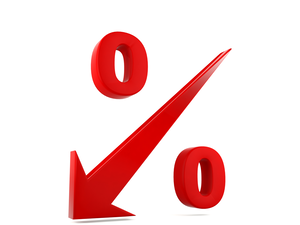 Getty Images
Getty ImagesThe interest rate of small savings schemes are linked to government bond yields of the same maturity. The PPF rate is linked to the 10-year government bond yield. The rate does not change on a daily basis, it is announced at the beginning of each quarter based on the average bond yield in the previous quarter. For the current April-June quarter, the rate was fixed at 7.1% at the end of March when the 10-year bond yield averaged 6.42% in the January-March quarter.
In April, rates had been lowered sharply. The PPF rate was cut 80 bps from 7.9% to 7.1% and the Senior Citizens’ Savings Scheme rate was cut from 8.6% to 7.4%. The hugely popular NSCs also saw a big cut from 7.9% to 6.8% while the Sukanya Samriddhi Account Scheme rate was cut to 7.6% from 8.4% earlier. Interest rate on the Kisan Vikas Patra was lowered to 6.9%, which extended the maturity period by 11 months to 124 months.
Since 1 April, the 10-year bond yield has till now averaged 6.07% and currently stands at 5.85%, which clearly means a rate cut is in the offing for small savings schemes. Investors need to act fast and lock themselves at higher rates before the rate cut. NSCs and KVPs bought before the rate cut will continue to give the contracted rate till maturity. Even the Senior Citizen Saving Scheme will give the same rate. But investments in the PPF and Sukanya schemes will get affected.
The cut in small savings schemes' rates coincides with a secular decline in bank deposit rates. Short-term deposit rates are now very close to or even less than what savings accounts are offering. SBI offers 2.9% on deposits of between seven days and 45 days, which is slightly better than the 2.7% offered on savings bank accounts. For Kotak Mahindra Bank and HDFC Bank, the short-term FD rates are lower than the savings rates. “With deposit rates dropping so low, we do see flows starting to move to other debt instruments such as tax-free bonds, sovereign gold bonds and even back to cash and debt mutual funds,” said Sandeep Das, head of Barclays Private Clients India.
But the decline in rates is not as catastrophic as it may seem. Consumer price inflation has remained below 7% in the past six months, which means that the small savings schemes are still yielding a positive real rate of return. However, the Covid lockdown has caused food inflation to spiral up to 9.28% in May. Fuel prices have also been going up, which could push up the overall inflation numbers.
(Your legal guide on estate planning, inheritance, will and more.)
Download The Economic Times News App to get Daily Market Updates & Live Business News.
(Your legal guide on estate planning, inheritance, will and more.)
Download The Economic Times News App to get Daily Market Updates & Live Business News.









 Get Unlimited Access to The Economic Times
Get Unlimited Access to The Economic Times
